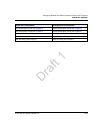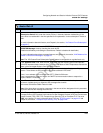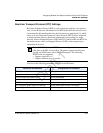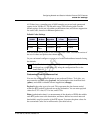
Global SIP Settings
41-001160-03, Rev 00, Releaes 2.4 4-93
Configuring Network and Session Initiation Protocol (SIP) Features
Real-time Transport Protocol (RTP) Settings
Real-time Transport Protocol (RTP) is used as the bearer path for voice packets
sent over the IP network. Information in the RTP header tells the receiver how to
reconstruct the data and describes how the bit streams are packetized (i.e. which
codec is in use). Real-time Transport Control Protocol (RTCP) allows endpoints
to monitor packet delivery, detect and compensate for any packet loss in the
network. Session Initiation Protocol (SIP) and H.323 both use RTP and RTCP for
the media stream, with User Datagram Protocol (UDP) as the transport layer
encapsulation protocol.
You can set the following parameters for RTP on the IP Phones:
Note: If RFC2833 relay of DTMF tones is configured, it is sent on the
same port as the RTP voice packets. The phones support decoding and
playing out DTMF tones sent in SIP INFO requests. The following
DTMF tones are supported:
• Support signals 0-9, #, *
• Support durations up to 5 seconds
Aastra Web UI Parameters Configuration File Parameters
RTP Port sip rtp port
Basic Codecs (G.711 u-Law, G.711 a-Law, G.729) sip use basic codecs
Force RFC2833 Out-of-Band DTMF sip out-of-band dtmf
Customized Codec Preference List sip customized codec
DTMF Method (global and per-line settings) sip dtmf method (global and per-line settings)
RTP Encryption (global and per-line settings) sip srtp mode (global and per-line settings)
Silence Suppression sip silence suppression
Draft 1


















